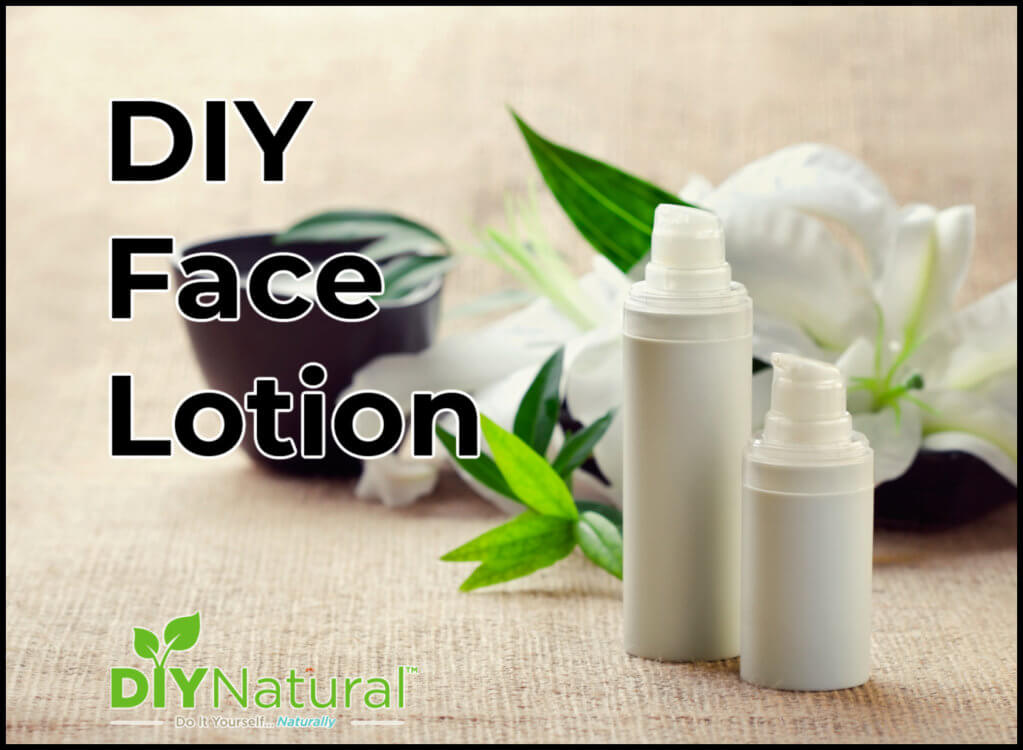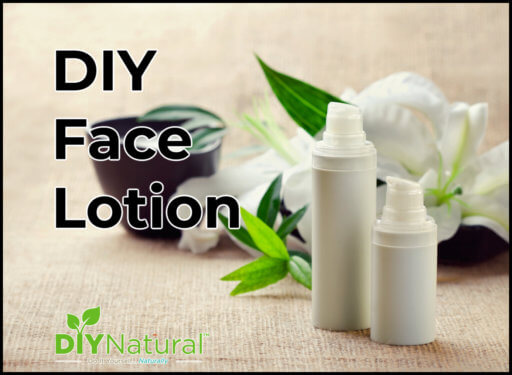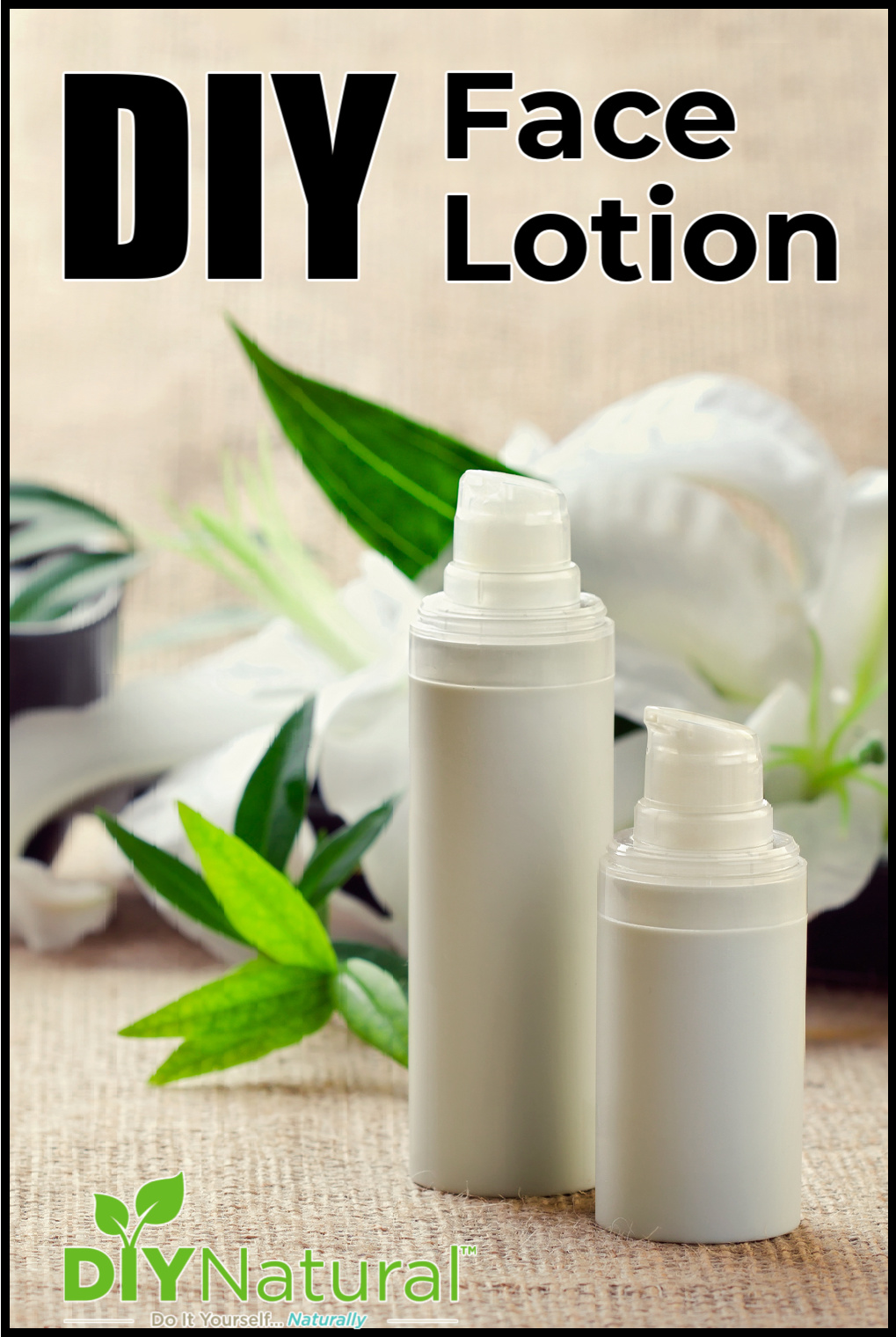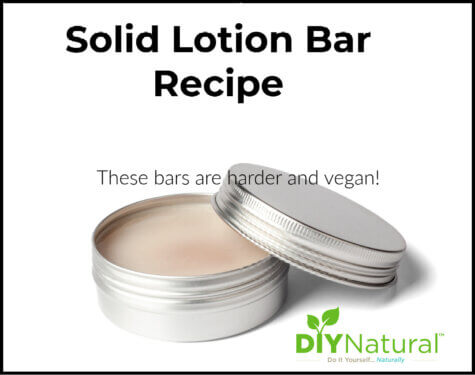
This silky, non-greasy DIY face lotion is the result of much trial and error! I’m happy to share my successful homemade face lotion recipe.
I’ve made a lot of creams in my day, but have always had trouble with lotion. I wanted something that I could put in a bottle and pump when I needed it. Something lighter that will not clog my pores, but moisturize my face in a way that wasn’t greasy. I finally came up with this successful formula after years of trying!
Lotion Versus Cream
Creams are easy, using oils, like almond or olive oil, beeswax, and an emulsifier to get it to mix with the distilled water I used. The cream would always be a bit greasy going on, but it absorbed well and helped to keep my hands from drying out. However, the beeswax would clog my pores, so I couldn’t use it as a facial cream. I tried adjusting the water content, using less wax, omitting some things, and adding others. Nothing really worked. Fast forward to a year ago. I decided to try my hand at DIY face lotion. It was really easy, but the emulsifying wax that I used wasn’t natural, and I wanted to stick with natural products. Then I discovered that some emulsifying waxes are naturally derived.
Natural Emulsifying Wax
“This waxy solid is prepared from polysorbate 60 obtained from corn sorbitol and cetostearyl alcohol from palm oil certified under Roundtable on Sustainable Palm Oil (RSPO) standards, which are currently monitored and guided by the World Wildlife Fund.”) Mountain Rose Herbs
Very thrilling to finally make a lotion that I can use on my face! The formulation took some trial and error, but I finally got to a product that I was happy with.
Making the DIY Face Lotion
The actual process of making the lotion is easy. Measure your ingredients in two separate parts, heat until melted or warm, combine, stick blend, add the essential or fragrance oils and bottle. Simple, huh? Don’t worry, I’ll break it down into steps to make it easier.
Sterilize
The first thing you need to remember is to make sure that everything is very clean. Any bit of bacteria or foreign particle can cause rot, mold, bacterial growth, or separation. None of these are desirable in a lotion project. I run all of my equipment through a dishwasher. The hot water is warm enough to sterilize everything. I also spray everything down with 90% alcohol before I start, to be sure there is nothing bad left from the air.
Gather Equipment
Then, get your equipment together. For this DIY face lotion recipe, I use two stainless steel pots, one for the oil part and one for the water part. I also use a glass measuring cup on my scale. You can sterilize the cup and it has a convenient handle. You can also scrape the ingredients out easily. I weigh some of the ingredients, rather than measuring, so the measuring cup works for that too. I also have a styrene spoon, silicone spatulas and a stainless steel funnel with a trigger open on it to fill the bottles. Much easier and less messy than the syringes and pastry bags that I tried first! And get your bottles ready too. It helps to have everything ready to go so you’re not searching for things later.

DIY Face Lotion Recipe
This silky, non-greasy DIY face lotion is the result of much trial and error! I'm happy to share my successful homemade face lotion recipe.
- Prep Time
- 30 minutes
- Active Time
- 30 minutes
- Cooling Time
- 2 hours
- Total Time
- 3 hours
- Servings
- 10 4 ounce bottles
- Estimated Cost
- $10
Equipment
Ingredients
- 2.1 oz emulsifying wax (weighed)
- .25 oz shea butter (weighed)
- 2.1 oz cocoa butter (weighed)
- 3.15 oz coconut oil (weighed)
- 1.4 oz jojoba oil (measured)
- 2.5 oz grapeseed oil (measured)
- .875 oz safflower oil (measured)
- 33.5 oz distilled water (measured)
- .5 oz Leucidal preservative (measured)
- ~2 oz essential oil (of your choosing)
Instructions
-
To begin making this DIY face lotion weigh and measure all of the ingredients (except for the water and the preservative) into one pan. Put on low heat to melt the wax and oils. In the other pan, measure out your water. Put the preservative aside for now.
-
When the water is warm (not hot) and the oils and waxes are just melted (not hot here either), take both of the pans off of the heat. Gently pour the water into the oils. This is where my sister says "the magic happens". The mixture will turn white. Pour back and forth between pans a few times, then divide the lotion in half, part in each pan. This step isn't necessary, but it speeds cooling.
-
When you have your lotion in two parts, use a stick or immersion blender to be sure they are fully mixed. One minute should be enough. At this point, the liquid is, well, pretty liquidy. It will thicken as it cools. You'll notice some gloppy stuff on the side and the bottom of the pan at first, and it may separate a bit or get chunky. Don't worry, it's just cooling. Use the spatula to scrape the edges, then use the stick blender again to fully incorporate it all.
-
Once the lotion reaches 120°F, you can add the preservative. By this time the lotion should be thickening so you can combine all of it together. Add the preservative and stir well. Then use the stick blender to be sure it's completely mixed in.
-
Once the DIY face lotion gets to a consistency of thick cream, you can add your scent. I do some unscented, then some with different scents. Grapefruit is my favorite, but any essential or fragrance oil will work. Just be sure to mix it in well. How much should you use? 1-5% is the average, but check the bottle or with the manufacturer to find the safe maximum level. You'll be working with about 40 ounces (plus a little extra) of lotion, so 2 ounces is usually the maximum.
-
When you have your scents all incorporated, then you can bottle the lotion. The stainless steel funnel that I got was a lifesaver, but you can also take a cheaper approach. Use a zip-top bag, place the lotion inside, seal, and snip a corner. This way you can fill the bottles with a minimum of mess. Be sure to use a scale and weigh the lotion as it goes into the bottle. This is especially important to be sure you don't overfill them. Remember to leave room for the dip tube for the pump.
-
Once the bottles are filled, take a sheet of parchment paper or something similar and lay it on the top. Because the lotion is still warm, condensation can form, often leading to mold. Don't cap until it is completely cool.
-
That's it! My secret to pumpable face lotion!
Notes
This recipe makes ten 4 ounce bottles. That said, you can cut it in half, or even double/triple it for a bulk batch. The oils that you use as well as the liquid can also be varied.
I used Leucidal as a preservative, but Germaben Plus and Germaben II work just as well and there are many others. ROE (rosemary oil extract) and GSE (grapefruit seed extract) can help to keep oils from going rancid but are not any help for controlling the growth of mold or mildew.
I used distilled water, but floral hydrosols can also be used. Rose and Calendula are the most popular. Avoid using teas as they can contain bacteria.
Made this recipe?
Mention @diynatural or tag it #diynatural!
There you have it folks, my tried and true recipe for homemade face lotion! I’m so excited to share the recipe with you all. Blessings!
Have you been wanting to make DIY face lotion, but were afraid to? Now you can!
*******




This recipe looks quite complicated. Can you give the ingredients in measure only, rather than weight?
Also, can Vit E oil be used for preservative, and beeswax instead of what you mention?
Thanks.